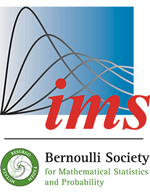Abstract
We introduce the multiplicative coalescent with linear deletion, a continuous-time Markov process describing the evolution of a collection of blocks. Any two blocks of sizes $x$ and $y$ merge at rate $xy$, and any block of size $x$ is deleted with rate $\lambda x$ (where $\lambda \geq 0$ is a fixed parameter). This process arises for example in connection with a variety of random-graph models which exhibit self-organised criticality. We focus on results describing states of the process in terms of collections of excursion lengths of random functions. For the case $\lambda =0$ (the coalescent without deletion) we revisit and generalise previous works by authors including Aldous, Limic, Armendariz, Uribe Bravo, and Broutin and Marckert, in which the coalescence is related to a “tilt” of a random function, which increases with time; for $\lambda >0$ we find a novel representation in which this tilt is complemented by a “shift” mechanism which produces the deletion of blocks. We describe and illustrate other representations which, like the tilt-and-shift representation, are “rigid”, in the sense that the coalescent process is constructed as a projection of some process which has all of its randomness in its initial state. We explain some applications of these constructions to models including mean-field forest-fire and frozen-percolation processes.
Citation
James B. Martin. Balázs Ráth. "Rigid representations of the multiplicative coalescent with linear deletion." Electron. J. Probab. 22 1 - 47, 2017. https://doi.org/10.1214/17-EJP100
Information





